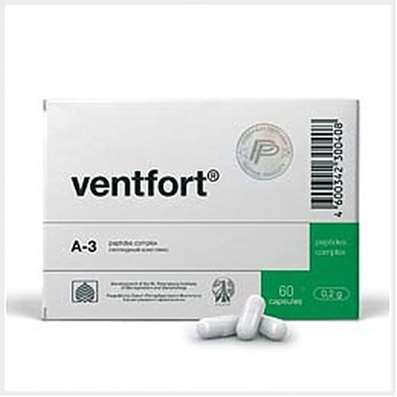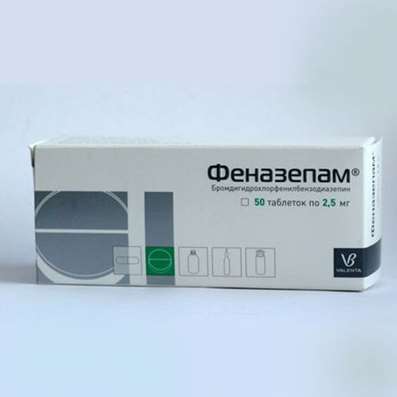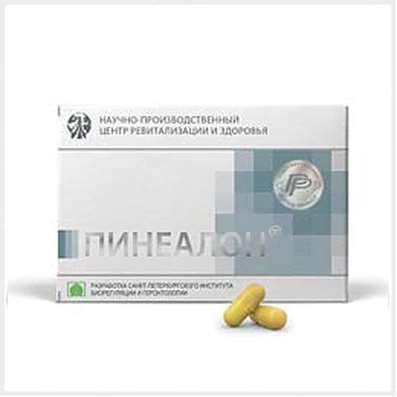Instruction for use: Nimulid
I want this, give me price
Active substance Nimesulide
ATX code M01AX17 Nimesulide
Pharmacological group
Other non-narcotic analgesics, including non-steroidal and other anti-inflammatory drugs
Nosological classification (ICD-10)
M06.9 Other specified rheumatoid arthritis
Rheumatoid arthritis,Pain syndrome in rheumatic diseases, Pain in rheumatoid arthritis, Inflammation in rheumatoid arthritis, Degenerative forms of rheumatoid arthritis, Children's rheumatoid arthritis, Exacerbation of rheumatoid arthritis, Acute articular rheumatism, Rheumatic arthritis, Rheumatic polyarthritis, Rheumatoid arthritis, Rheumatic polyarthritis, Rheumatoid arthritis, Rheumatoid arthritis of active course, Rheumatoid arthritis, Rheumatoid polyarthritis, Acute rheumatoid arthritis, Acute rheumatism
M07.3 Other psoriatic arthropathies (L40.5 +)
Arthritis psoriatic, The generalized form of psoriatic arthritis, Psoriatic arthritis
M10.9 Gout, unspecified
Arthritis Gouty, Acute gouty arthritis, Acute attack of gout, Gouty Arthritis, Articular syndrome with exacerbation of gout, Articular syndrome with gout, Urarturia, Chronic arthritic arthritis, Acute gout, Salt diathesis
M19.9 Arthrosis, unspecified
Change in brush with osteoarthritis, Osteoarthritis, Osteoarthrosis, Arthrosis of large joints, Pain syndrome in osteoarthritis, Pain syndrome in acute inflammatory diseases of the musculoskeletal system, Pain syndrome in chronic inflammatory diseases of the musculoskeletal system, Deforming arthrosis, Deforming osteoarthritis, Deforming osteoarthritis of joints, Osteoarthritis in the acute stage, Osteoarthritis of large joints, Acute pain syndrome with osteoarthritis, Post-traumatic osteoarthritis, Rheumatic osteoarthritis, Spondylarthrosis, Chronic osteoarthritis
M42 Osteochondrosis
Pain in spinal osteochondrosis, Cervical osteochondrosis, Radicular syndrome in osteochondrosis, intervertebral osteochondrosis, osteochondrosis, Osteochondrosis with radicular syndrome, Osteocondritis of the spine
M45 Ankylosing spondylitis
Ankylosing spondylarthrosis, Marie-Strumpel disease, Ankylosing spondylitis, Pain syndrome in acute inflammatory diseases of the musculoskeletal system, Pain syndrome in chronic inflammatory diseases of the musculoskeletal system, Bechterew's disease, Ankylosing spondylitis, Diseases of the spinal column, Rheumatic spondylitis, Bechterew-Marie-Strumpel disease
M54.1 Radiculopathy
Acute sciatica, Radiculopathy, Radiculitis, Radiculitis with radicular syndrome, Acute radiculopathy, Pain syndrome with radiculitis, Subacute radiculitis, Radiculitis, Chronic radiculitis, Diseases of the spinal column
M54.3 Sciatica
Ishialgia, Neuralgia of the sciatic nerve, Sciatic neuritis
M54.4 Lumbago with sciatica
Pain in the lumbosacral spine, Lumbago, Sciatica, Lumbar syndrome
M54.5 Pain below the back
Pain in the lower back, Lumbar pain, Lumbalia, Painful conditions of the spinal column, Back pain, Lower Back Pain Syndrome
M67.9 Lesion of synovium and tendon, unspecified
Inflammation of the tendons, Inflammation of ligaments, Inflammation of tendons with injuries, Inflammation of tendons
M71.9 Bursopathy, unspecified
Bursites, Alberta disease, Acute bursitis
M79.1 Myalgia
Myofascial pain syndromes ,Pain syndrome in musculo-articular diseases, Pain syndrome in chronic inflammatory diseases of the musculoskeletal system, Pain in the muscles, Tenderness of muscles, Muscular soreness in severe physical exertion, Painful conditions of the musculoskeletal system, Pain in the musculoskeletal system, Pain in the muscles, Pain at rest, Muscle aches, Muscle pain, Musculoskeletal pain, Myalgia, Muscle pain, Muscle pain at rest, Muscle pain, Muscular pain of non-rheumatic origin, Muscle pain of rheumatic origin, Acute muscle pain, Rheumatic pain, Rheumatic pains, Myofascial syndrome, Fibromyalgia
T14.3 Dislocation, sprain and damage to the capsular-ligamentous apparatus of the joint of the unspecified area of the body
Painful stretching of muscles, Pain and inflammation in tension, Dislocation of dislocation, Degenerative changes in the ligamentous apparatus, Edema due to sprains and bruises, Edema after interventions for sprains, Damage and rupture of ligaments, The musculoskeletal system is damaged, Damage to ligaments, Damage to the joints, Ligament ruptures, Tendon tendons,Ruptures of the tendons of muscles,Stretching, Crick, Stretching of the muscle, Sprain, Tension of the tendons, Extensions,Stretch muscles, Sprains, Tension of the tendons, Injury of the musculoskeletal system, Injuries to the joints, Injuries of capsule-articular tissues, Injuries of the osteoarticular system, Injuries to ligamentsInjuries to the joints, Joint wounds, Stretching of the ligamentous apparatus, Habitual stretching and tearing
T14.9 Injury unspecified
Pain syndrome after trauma, Pain syndrome with injuries, Pain syndrome with trauma and after surgery, Pain in case of injury, Pain of a traumatic nature, Joint pain with injuries, Postoperative and post-traumatic pain, Pain in case of injury, Pain of a traumatic origin, Severe pain syndrome of traumatic origin, Deep tissue damage, Deep scratches on the trunk, Closed injury, Minor Household Injuries, Minor skin damage, Violations of the integrity of soft tissues, Uncomplicated trauma, Extensive traumatic injury, Acute pain syndrome of traumatic origin, Edema with trauma, Postponed sports injuries, Post-traumatic pain, Soft tissue injuries, Joint wounds, Sports injuries, Injury, Traumatic pain, Traumatic pains, Traumatic infiltrate,Injuries to sports
Z100 * CLASS XXII Surgical practice
Abdominal surgery, adenomectomy, Amputation, Coronary angioplasty, Angioplasty of the carotid arteries, Antiseptic skin treatment for wounds, Antiseptic Hand, Appendectomy, atherectomy, Balloon coronary angioplasty, Vaginal hysterectomy, The coronary bypass, Interventions in the vagina and cervix, Interventions on the bladder, Intervention in the mouth, Restoration and reconstructive surgery, Hand hygiene of medical personnel, Gynecologic surgery, Gynecological intervention, Gynecological surgery, Hypovolemic shock during operations, Disinfection of purulent wounds, Disinfection of wounds edges, Diagnostic intervention, Diagnostic procedures, Cervical Diathermocoagulation, Long-surgery, Replacing the fistula catheters, Infection in orthopedic surgery, Artificial heart valve, cystectomy, Short-term outpatient surgery, Short-term operation, Short surgical procedures, Krikotireotomiya, Blood loss during surgery, Bleeding during surgery and in the postoperative period, Kuldotsentez, laser photocoagulation, laser coagulation, retinal laser coagulation, Laparoscopy, Laparoscopy in Gynecology, CSF fistula, Small gynecological operations, Small surgical procedures, Mastectomy and subsequent plastic, mediastinotomy, Microsurgical operations on the ear, Mukogingivalnye operation, suturing, Minor surgery, neurosurgical operation, Immobilization of the eyeball in ophthalmic surgery, testectomy, pancreatectomy, Perikardektomiya, The period of rehabilitation after surgery, The period of, convalescence after surgery, Percutaneous transluminal coronary angioplasty, Pleural thoracentesis, Pneumonia postoperative and posttraumatic, Preparation for surgical procedures, Preparation for surgery, Preparation of the surgeon's hands before surgery, Preparation of the colon for surgical procedures, Postoperative aspiration pneumonia in neurosurgical and thoracic surgery, Postoperative nausea, Postoperative bleeding, postoperative granuloma, postoperative shock, The early postoperative period, myocardial revascularization, Radiectomy, gastric Resection, bowel resection, uterine Resection, liver Resection, enterectomy, Resection of part of the stomach, Reocclusion of the operated vessel, Bonding tissues during surgical procedures, Removal of sutures, Condition after eye surgery, Condition after surgery, Condition after surgery in the nasal cavity, Condition after gastrectomy, Status after resection of the small intestine, Condition after tonsillectomy, Condition after removal of the duodenum, Condition after phlebectomy, Vascular surgery, Splenectomy, Sterilization of surgical instruments, Sterilization of surgical instruments, sternotomy, Dental surgery, Dental intervention in periodontal tissues, strumectomy, Tonsillectomy, Thoracic surgery, total gastrectomy, Transdermal intravascular coronary angioplasty, Transurethral resection, Turbinektomiya, Removal of a tooth, cataract surgery, Removal of cysts, tonsillectomy, Removal of fibroids, Removing the mobile primary teeth, Removing polyps, Removing broken tooth, Removal of the uterus body, Removal of sutures, Urethrotomy, Fistula likvoroprovodyaschih ways, Frontoetmoidogaymorotomiya, Surgical infection, Surgical treatment of chronic limb ulcersm, Surgery, The surgery in the anal area, The surgery on the colon, Surgical practice, The surgical procedure, Surgical interventions, Surgery on the gastrointestinal tract, Surgical procedures on the urinary tract, Surgical procedures on the urinary system, Surgical intervention of the genitourinary system, Surgical procedures on the heart, Surgical manipulation, surgery, Surgery on the veins, Surgical intervention, Vascular surgery, Surgical treatment of thrombosis, cholecystectomy, Partial gastric resection, transabdominal hysterectomy, Percutaneous transluminal coronary angioplasty, Percutaneous transluminal angioplasty, Coronary artery bypass, tooth Extirpation, Extirpation of milk teeth, pulpectomy, pulsative cardiopulmonary bypass, tooth Extraction, teeth Extraction, cataract extraction, Electrocoagulation, endourological intervention, episiotomy, Etmoidotomiya, Complications after tooth extraction
Composition
Tablets 1 table.
active substance:
nimesulide 100 mg
auxiliary substances: lactose - 151.5 mg; croscarmellose sodium - 22 mg; silicon colloidal dioxide - 11 mg; corn starch - 37.6 mg; povidone - 8.5 mg; docusate sodium - 6.8 mg; polysorbate - 1 mg; hydrochloric acid *; purified water*; magnesium stearate - 1.6 mg (* removed in the manufacturing process)
Tablets for absorption 1 table.
active substance:
nimesulide 100 mg
auxiliary substances: mannitol - 187.85 mg; sodium carboxymethyl starch - 15 mg; methylparahydroxybenzoate sodium - 0.281 mg; sodium propyl parahydroxybenzoate 0.021 mg; potassium sorbate - 0.346 mg; croscarmellose sodium - 3 mg; silicon dioxide colloid - 5 mg; magnesium stearate - 5 mg; aspartame - 7 mg; orange flavoring - 1,5 mg
Description of dosage form
Tablets: round, biconvex, pale yellow, on one side the inscription "NIMULID", on the other - the image of the logo.
Tablets for resorption: round, biconcave, pale yellow.
pharmachologic effect
Pharmacological action - anti-inflammatory, analgesic.
Pharmacodynamics
Nimulid is an NSAID from the sulfonanilide class. Has anti-inflammatory, analgesic and antipyretic effect.
Nimesulide refers to NSAIDs, the mechanism of its action is associated with selective inhibition of COX-2 and the effect on a number of other factors - suppression of the platelet activation factor, tumor necrosis factor alpha, inhibition of proteinases and histamine. Selectively inhibiting COX-2, decreases the biosynthesis of PG in the inflammatory focus, has a less pronounced inhibitory effect on COX-1 (less often causes side effects associated with inhibition of PG synthesis in healthy tissues).
Pharmacokinetics
Absorption when ingested - high (eating intake reduces the rate of absorption, without affecting its degree). The connection with plasma proteins is 95%, with erythrocytes - 2%, with lipoproteins - 1%, with acid alpha 1-glycoproteins - 1%. The dose change does not affect the degree of binding. Cmax - 3,5-6,5 mg / l. Vd - 0,19-0,35 l / kg.
Penetrates into the tissue of the female genital organs, where after a single intake its concentration is about 40% of the concentration in the plasma. It penetrates into the acidic environment of the inflammatory focus (40%), synovial fluid (43%). Easily penetrates through the histohematological barriers.
Metabolized in the liver by tissue monooxygenases. The main metabolite, 4-hydroxynimidesulide (25%), has similar pharmacological activity, but due to a decrease in the size of the molecules it is able to rapidly diffuse along the hydrophobic COX-2 channel to the active methyl group binding site. 4-Hydroxynimidesulide is a water-soluble compound, for the elimination of which glutathione and conjugation reactions of the II phase of metabolism (including sulfation, glucuronation) are not required.
T1 / 2 nimesulide - about 1.56-4.95 h, 4-hydroxynimidesulide - 2.89-4.78 h. 4-Hydroxynymesulide is excreted by the kidneys (65%) and with bile (35%), is subjected to enterohepatic recirculation.
In patients with renal insufficiency (Cl creatinine 1.8-4.8 l / h or 30-80 ml / min), as well as in children and the elderly, the pharmacokinetic profile of nimesulide does not change significantly.
Indications of Nimulid
rheumatoid arthritis;
articular syndrome with exacerbation of gout;
psoriatic arthritis;
ankylosing spondylitis;
osteochondrosis with radicular syndrome;
osteoarthritis;
myalgia of rheumatic and non-rheumatic origin;
inflammation of ligaments, tendons, bursitis, incl. post-traumatic inflammation of soft tissues;
pain syndrome of various genesis (including in the postoperative period, with trauma, algodismenorea, toothache, headache, arthralgia, lumboeishalgia).
The drug is intended for symptomatic therapy, reducing pain and inflammation at the time of use, the progression of the disease is not affected.
Contraindications
Pills
hypersensitivity to nimesulide and drug components;
erosive and ulcerative changes in the gastric and duodenum mucosa;
inflammatory bowel disease in the phase of exacerbation;
active gastrointestinal bleeding;
expressed violations of the liver and / or kidney function, severe renal failure (Cl creatinine <30 ml / min);
progressive kidney disease;
severe hepatic impairment or active liver disease;
severe heart failure;
severe blood clotting disorders;
confirmed hyperkalemia;
period after aortocoronary shunting;
anamnestic data on an attack of bronchial obstruction, rhinitis, urticaria after taking acetylsalicylic acid or other NSAIDs (complete or incomplete acetylsalicylic acid intolerance syndrome - rhinosinusitis, urticaria, polyps of the nasal mucosa, asthma);
pregnancy and the period of breastfeeding;
children under 12 years.
Lozenges
hypersensitivity to the active substance or ancillary components;
complete or incomplete combination of bronchial asthma, recurrent nasal polyposis or paranasal sinuses and intolerance to acetylsalicylic acid and other NSAIDs (including in the anamnesis);
erosive and ulcerative changes in the mucosa of the stomach or duodenum, active gastrointestinal bleeding; cerebrovascular or other bleeding;
inflammatory bowel disease (ulcerative colitis, Crohn's disease) in the phase of exacerbation;
hemophilia and other bleeding disorders;
Decompensated heart failure;
hepatic insufficiency or any active liver disease;
severe renal failure (Cl creatinine <30 mL / min);
progressive kidney disease;
confirmed hyperkalemia;
period after aortocoronary shunting;
anamnestic data on the development of hepatotoxic reactions using nimesulide drugs;
concomitant use of potentially hepatotoxic substances;
alcoholism, drug addiction;
pregnancy, the period of breastfeeding;
children under 12 years.
With caution (tablets, resorption tablets): coronary heart disease, cerebrovascular disease, congestive heart failure, dyslipidemia / hyperlipidemia, diabetes mellitus, peripheral arterial disease, smoking, Cl creatinine <60 ml / min.
Anamnestic data on the development of gastric ulcerative lesions, the presence of Helicobacter pylori infection, old age, prolonged use of NSAIDs, frequent alcohol use, severe somatic diseases, concomitant therapy with anticoagulants (eg warfarin), antiplatelet agents (eg acetylsalicylic acid, clopidogrel), oral GCS (eg prednisolone), SSRIs (eg citalopram, fluoxetine, paroxetine, sertraline).
Side effects
The frequency is classified depending on the occurrence - very often (> 10); often (<10 - <100); infrequently (<100 - <1000); rarely (<1000 - <10000); very rarely (<10000).
From the digestive tract: often - diarrhea, nausea, vomiting; infrequently - constipation, flatulence, gastritis; very rarely - abdominal pain, stomatitis, tarry stool, gastrointestinal bleeding, ulcer and / or perforation of the stomach or duodenum.
From the side of the central nervous system: infrequently - dizziness; rarely - a sense of fear, nervousness, nightmarish dreams; very rarely - headache, drowsiness, encephalopathy (Reye syndrome).
On the part of the respiratory system: infrequently - shortness of breath; very rarely - bronchospasm; possibly exacerbation of bronchial asthma.
From the CCC: infrequently - arterial hypertension; rarely - tachycardia, hemorrhages, hot flashes.
From the senses: rarely - blurred vision.
Skin and mucous membranes: infrequently - itching, rash, increased sweating; rarely erythema, dermatitis.
Liver and bile excretory system: often - increased activity of hepatic transaminases; very rarely - hepatitis, fulminant hepatitis, jaundice, cholestasis.
Kidney and urinary system: infrequently - edema; rarely - dysuria, hematuria, urinary retention, hyperkalemia; very rarely - renal failure, oliguria, interstitial nephritis.
On the part of the organs of hematopoiesis: rarely - anemia, eosinophilia; very rarely - thrombocytopenia, pancytopenia, purpura, prolonged bleeding time.
Allergic reactions: rarely - hypersensitivity reactions; very rarely - anaphylactoid reactions, urticaria, angioedema, edema of the face, multiforme exudative erythema, incl. Stevens-Johnson syndrome, toxic epidermal necrolysis (Lyell's syndrome).
General reactions: rarely - general weakness; very rarely - hypothermia.
In case of occurrence of other, not mentioned above, side effects or deterioration of state of health it is necessary to address immediately to the doctor.
Interaction
The effect of medications that reduce blood coagulability, increases with their simultaneous use with nimesulide.
Nimesulide may reduce the action of furosemide. Reduces the therapeutic effect of antihypertensive drugs. Nimesulide may increase the chance of side effects while taking methotrexate.
The level of lithium in the plasma increases with simultaneous reception of lithium and nimesulide preparations.
Because of the high degree of binding of nimesulide to plasma proteins, patients who are treated with hydantoin and sulfonamides at the same time should be under the supervision of a physician, passing the examination at short intervals.
Nimesulide can enhance the action of cyclosporin on the kidneys.
Use with SCS, serotonin reuptake inhibitors increases the risk of developing bleeding from the gastrointestinal tract.
Dosing and Administration
Pills
Inside. Adults and children over 12 years of age (body weight> 40 kg) - 1 table. 2 times a day. Tablets are taken after a meal with a sufficient amount of liquid. The maximum daily dose is 5 mg / kg.
Patients with chronic renal failure require a reduction in the daily dose to 100 mg.
The course of treatment is as prescribed by the doctor.
Lozenges
A minimum effective dose should be used with the minimum possible short course.
Adults and children over 12 years of age (body weight> 40 kg) - usually at a dose of 100 mg (1 table) 2 times a day at the end or after meals. The tablet should be put on the tongue, where it immediately begins to dissolve. Swallow the saliva in which the tablet dissolved.
Overdose
Symptoms: apathy, drowsiness, nausea, vomiting. There may be gastrointestinal bleeding, arterial hypertension, acute renal failure, respiratory depression.
Treatment: Symptomatic treatment of the patient and maintenance of the patient are required. There is no specific antidote. In case an overdose has occurred within the last 4 hours, it is necessary to induce vomiting, to receive activated charcoal (60-100 g per adult person), osmotic laxatives. Forced diuresis, hemodialysis are ineffective because of the high connection of the drug with proteins.
special instructions
Nimulid should be used with caution in patients who have a tendency to bleeding, patients with upper gastrointestinal disorders or patients receiving anticoagulants. Since Nimulid is partially excreted by the kidneys, its dosage for patients with impaired renal function should be reduced depending on the Cl creatinine score.
Given reports of visual impairment in patients taking other NSAIDs, treatment should be stopped immediately if any visual impairment occurs and the oculist should examine the patient.
The drug can cause fluid retention in the tissues, so patients with high blood pressure and with cardiac abnormalities Nimulid should be used with extreme caution.
To reduce the risk of developing adverse events on the part of the gastrointestinal tract, a minimum effective dose should be used with the minimum possible short course.
Influence on the ability to drive a car or perform work that requires an increased speed of physical and mental reactions. Patients who have side effects: dizziness, drowsiness, blurred vision, caution should be exercised when driving vehicles and engaging in other potentially dangerous activities that require increased attention and speed of psychomotor reactions.
Form of issue
Tablets, 100 mg. For 10 tab. in a blister of PVC / aluminum foil; 1, 2, 3 or 10 blisters in a pack of cardboard.
Tablets for resorption, 100 mg. For 10 tab. in a blister of PVC / aluminum foil; 1 or 2 blisters in a pack of cardboard.
Conditions of leave from pharmacies
On prescription.
storage conditions
In dry, the dark place at a temperature of 15-25 ° C.
Keep out of the reach of children.
Shelf life of Nimulid
tablets for resorption 100 mg - 3 years.
tablets 100 mg - 5 years.
Do not use after the expiry date printed on the package.

 Cart
Cart





